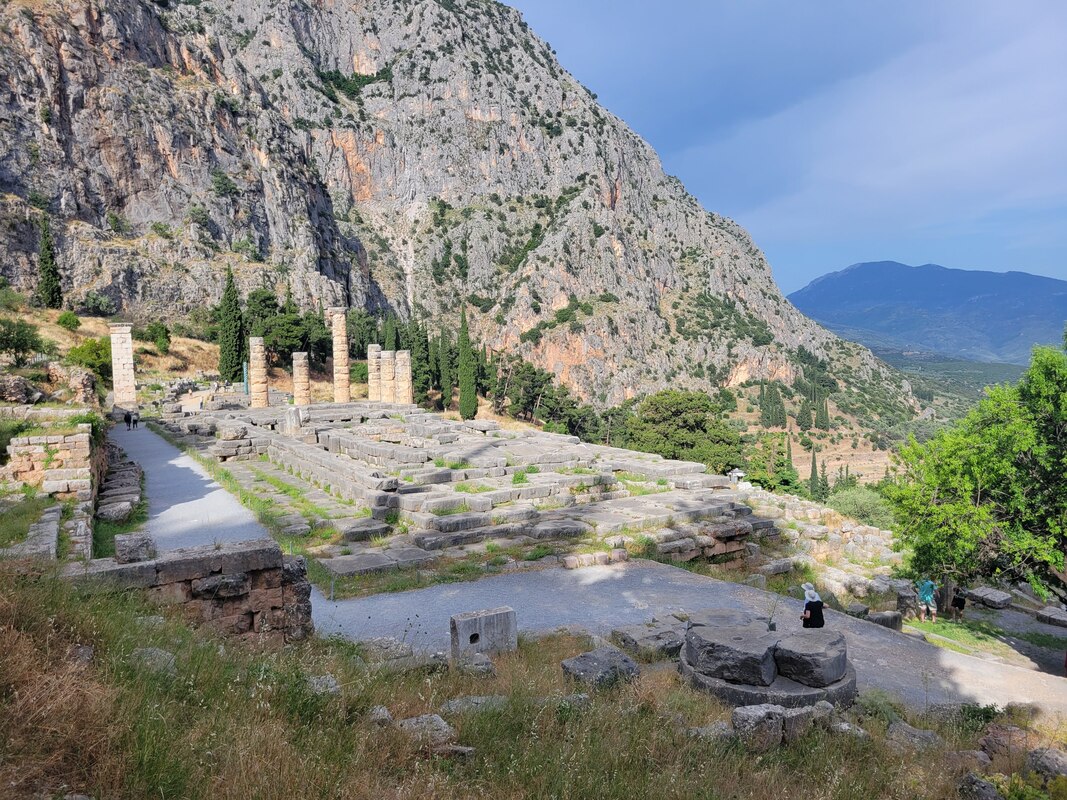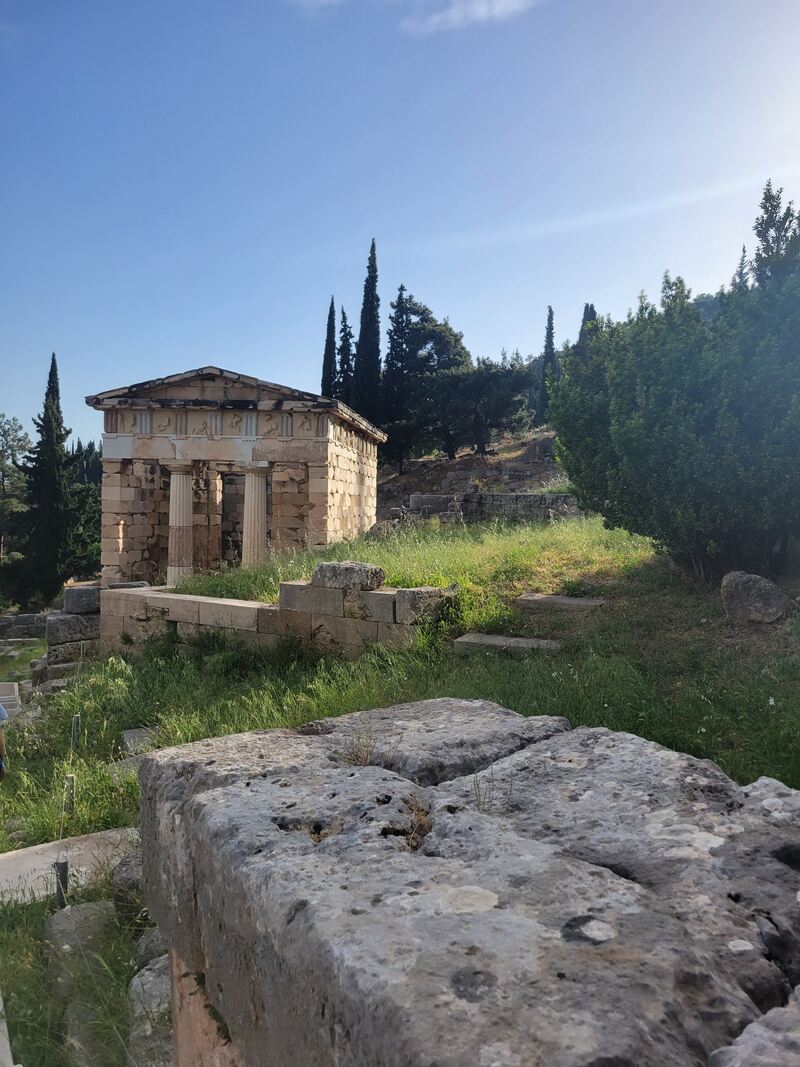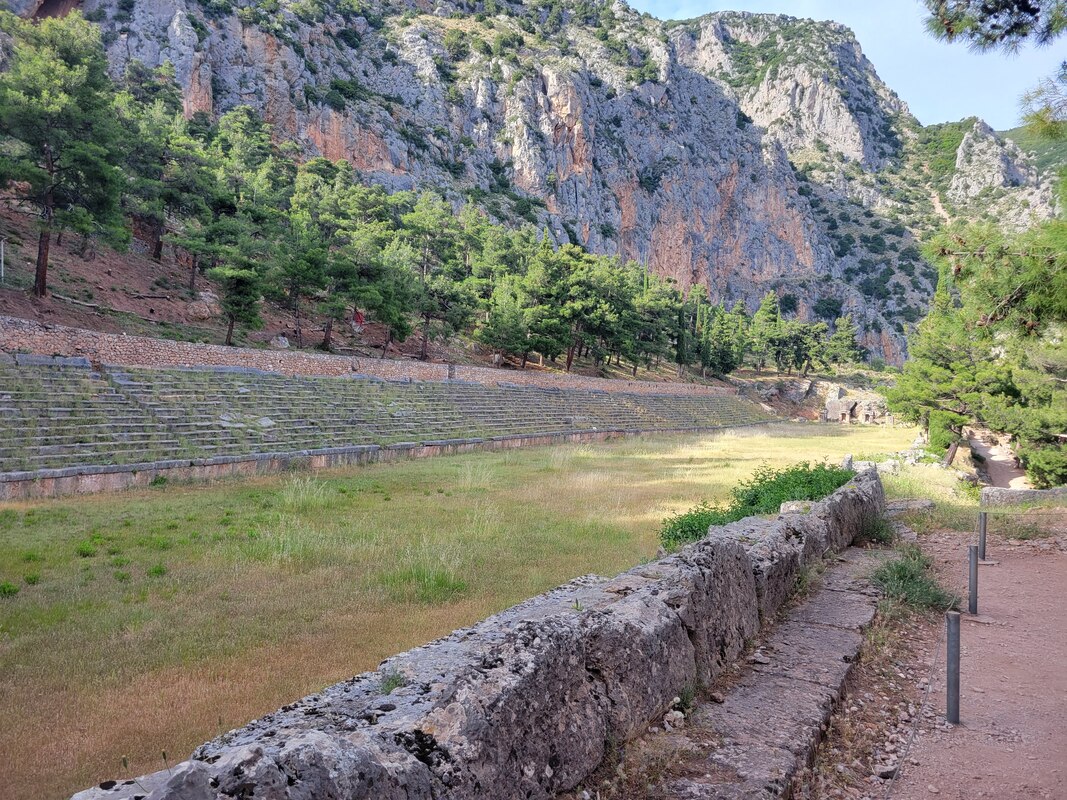Discovering Delphi.Today we met our driver, Christos, and loaded our luggage onto the tour bus for the first time as we traveled outside Athens through some of the countryside and up into the Pindus Mountains towards Delphi.
While the bus rides may seem long, I always find them fun on a Rick Steves tour. The rides allow you some time to nap, get to know tour members who are sitting near you, and listen to your guide describe interesting cultural, historical, or linguistic information. It's also a chance to find out more about where you are going! Dafni usually spent our rides explaining Greek mythology, explaining key points or helpful information about the sites we were going to, coordinating dinners (if we had menu options for a meal), and describing sites we might see along the drive. |
Insider Info: Itinerary PhotosAlways snap a picture of the next day's itinerary on your phone to refer to later. Tour guides post the daily itinerary the evening before in the hotel lobby.
|
In Greece, bus drivers are required to take a break every few hours, so none of our drives were particularly long - or if they were, we often had a snack or meal break somewhere in between. On our way from Athens to Delphi, we stopped in the small town of Arachova for lunch (and just outside it for a great view!).
The modern town of Delphi is fairly small and only has 2 main, parallel roads running along the mountainside. Because of this, when we pulled into town in the afternoon, we had to speedily disembark, which included getting off the bus and grabbing luggage off the street to cause a minimal traffic jam. After checking into our hotel, we had a little time to explore the town.
The ancient site of Delphi is a few minutes' walk from the modern town, and met up as a group outside the museum where we met our tour guide, Penny (and Mamma Fay's niece!). Penny walked us through the many interesting artifacts in the Delphi Archeological Museum unearthed during excavations of the Delphi oracle and surrounding area. Ancient Delphi was a sanctuary and place of worship where people from all over came to hear prophecies from the oracle of Delphi (at the Temple of Apollo) and to participate in the Pythian Games (one of the four Panhellenic Games and held every four years). As a result, people brought (and subsequently left behind) many interesting things from different corners of the ancient world, many of which are now housed in the museum, in addition to several interesting sculptures from the site.
|
After a quick break in the shade, we headed from the museum to the ancient site itself. According to myth, Delphi was the center of the ancient Greek world. To find the center of the world, Zeus sent two eagles to fly around the world and they met at Delphi, and he marked the place with an omphalos stone (bellybutton). The site was also famous for its oracle and many people, including kings, would travel to hear her prophecies. The ancients believed that the god Apollo spoke through the oracle (Pythia) when she went into a trance, possibly high on vapors inhaled from a chasm (or influenced by eating laurel leaves). The oracle was assisted by priests who might have influenced or interpreted her messages - and with people bringing news and information from so many different places, Delphi was very influential in current political affairs.
As part of the Pythian Games and other events, the ancient site housed many shops for travelers to purchase offerings to the god Apollo, as well as tributes and treasuries to thank the gods for victory (in war, athletics, and more). The Temple of Apollo at the center of the (mostly vertical) site is where the oracles and priests worked and gave prophecies. Above the temple is the theater, where song contests to the god Apollo were held during the Pythian Games (Apollo, like many of the ancient Greek god wore many hats - in addition to being the sun god, he was also the god of music, dance, prophecy, poetry, medicine, and more). Further up the mountain is the site of the ancient stadium. Unfortunately, due to rock slides and other hazards, you can't enter the stadium, but a walk to the left brings you to a viewpoint where you can see most of the stadium. Like much of Greece, it's a steep climb up to the stadium on a rocky path. |
Phew! After all that hiking up and down the slopes of Mount Parnassus (watch your step on the way down!), we met up as a group for dinner in modern Delphi at Vakhos (think: Bacchus). On the menu: soup, salad, fried cheese, goat, and a great sunset view!



























